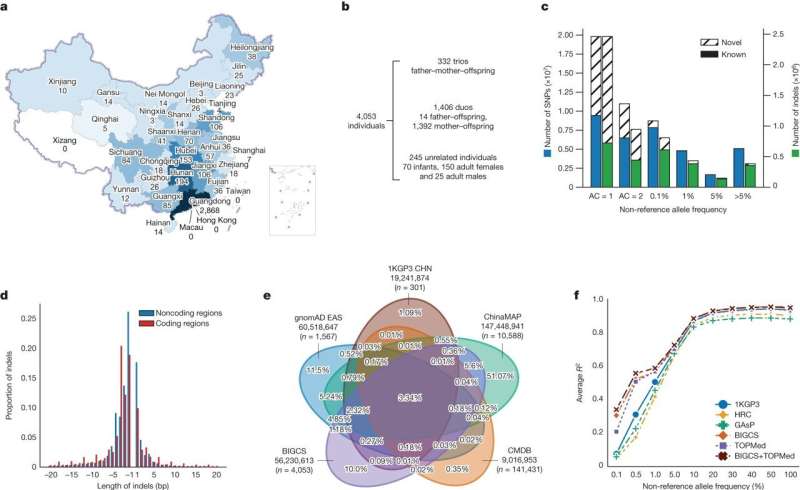February 5, 2024 report
This article has been reviewed according to Science X's editorial process and policies. Editors have highlighted the following attributes while ensuring the content's credibility:
fact-checked
peer-reviewed publication
trusted source
proofread
Chinese genetic study seeks to make generational medical discoveries

A team of medical researchers at Guangzhou Women and Children's Medical Center, working with colleagues from several other institutions in China, has conducted a large-scale genetic study. Publishing in the journal Nature, the group analyzed genetic sequencing data from thousands of Chinese participants.
Nicholas John Timpson with the University of Bristol has published a News & Views piece in the same journal issue outlining the ideas behind charting genetic variations in given populations and an overview of the work by the team in China.
As the study of genetic sequencing and use of genetic data continue to mature, medical researchers are seeking new ways to treat patients based on their unique genetic profile. To reach this goal, medical scientists are conducting genetic studies that involve comparing genetic data from large numbers of people to find variants.
In this new effort, the team in China has been analyzing genetic data obtained from participants over the past decade for a project called the Born in Guangzhou Cohort Study. Genetic data has been collected from people born in Guangzhou and from their parents. To date, the researchers have analyzed data from more than 4,000 people and from an additional 58,000 newborn babies. In addition to genetic data, researchers have also been collecting epidemiological data, such as height and weight, and other information including medical histories.
The research team has found genetic variants that can impact a person's health and well-being as they grow older. One variant was associated with weight gain during pregnancy. Another was associated with the development of cholestasis, the overproduction of bile, in pregnant women, leading to dry, itchy skin for the mother and jaundice or sometimes death of the baby. They note that the variant appears to be more prevalent in East Asian mothers. They also found variants that appeared to explain abnormal cholesterol levels in the mother, the baby, or both.
The research team also found variants that appeared to play a role in physical characteristics—tall mothers with high blood sugar, for example, were found to have heavier babies if they fasted during their pregnancy, while mothers who developed high blood pressure tended to have shorter babies.
More information: Shujia Huang et al, The Born in Guangzhou Cohort Study enables generational genetic discoveries, Nature (2024). DOI: 10.1038/s41586-023-06988-4
Nicholas John Timpson, An early look at birth cohort genetics in China, Nature (2024). DOI: 10.1038/d41586-024-00079-8
© 2024 Science X Network





















